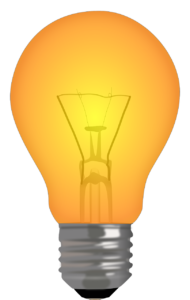
Philips produced the first sodium lamps commercially in Holland in the year 1932. Sodium lights are of two kinds: High Pressure (also called HPS) and Low Pressure (also called LPS). These lamps are most commonly used for lighting streets. They are also used for industrial uses.
How it works
As you might have learned in your A level Physics Tuition classes, the sodium vapor lamp works because of the photoelectric effect. Electric current is passed through sodium gas, making it emit light.
When the current is passed through the gas, its temperature increases and it vaporizes. There are 11 electrons present in one sodium atom. These electrons are stacked in such a way that one electron is ready to accept as well as emit energy. An electric discharge takes place when electricity is passed through sodium vapors at low or high pressure. As a result the valence electron present in sodium atoms become excited and emit light. The wavelength of the emitted light is 590 nanometers, which correspond to yellow light.
Sodium Vapor lamps emit yellow light only. Because of this, they are not used for everyday lighting purposes, even though they give extremely high output.
Now let’s look at low pressure and high pressure sodium lamps.
Low Pressure Sodium Lamp
The first sodium lamp that was developed was LPS lamp. It has a unique monochromatic yellow color. Because of its poor color rendering, it failed to become popular in any other part except Europe. LPS lamp is very effective, in fact it is one of the more effective lamps, if not the most effective. This is because this lamp creates light at a frequency that’s most sensitive to human eye using all the current.
The following are the main advantages of LPS lamp:
- It is extremely efficient
- As it is very powerful, it is extremely suitable for large areas
- It restarts almost instantly in case of a brownout, even though it has a warm-up time of a few minutes
- Its lumen output remains the same (on the other hand, lumen output of LEDs drops with time, and the same is true for incandescent)
The following are the main disadvantages of LPS:
- Its color rendering is the worst
- Sodium as a material is hazardous and can combust on exposure to air
High Pressure Sodium Lamp
When it comes to street lightening, high pressure sodium lamp is used more commonly than any other lamp. The main advantage of HPS lamp over LPS lamp is that former emits more acceptable color. As far as efficiency is concerned, HPS lamp is just as efficient as LPS. As you might already know through your physics tuition classes, the first HPS lamp was developed by General Electronics.
The following are the main advantages of HPS lamps:
- It has good efficiency
- Compared to LPS, HPS lamps are smaller
- Compared to LPS lamps, HPS lamps have better bulb life
The following are the main disadvantages of HPS lamps:
- Compared to halogen lamps, HPS lamps have a bad color rendering

